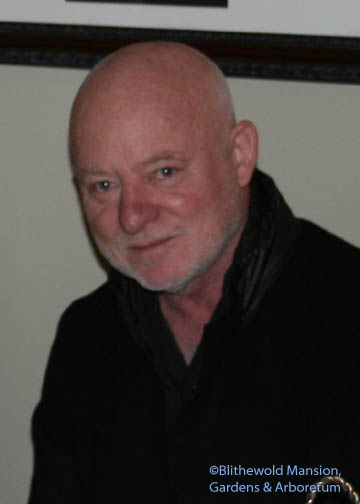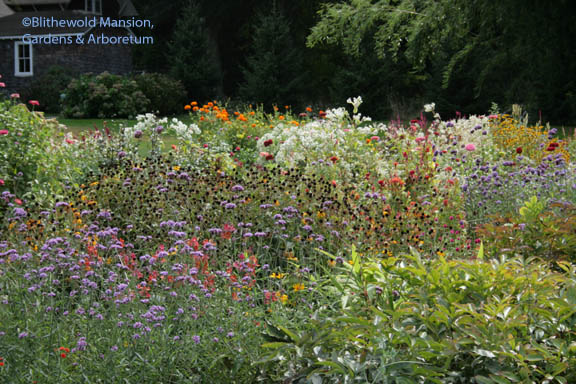Immense sense of abundance
 It’s kind of astonishing that an “immense sense of abundance” was, for Gail and me, a take-away theme from the Garden Design luncheon given that Joe Eck, our speaker, so recently lost his partner in life and gardens, Wayne Winterrowd. Joe and Wayne spent their lives together creating gardens and Joe showed us a few examples of their designs – all labor intensive (“labor intensive gardens are our speciality”, says Joe) and all exuberant, lush celebrations of nature.
It’s kind of astonishing that an “immense sense of abundance” was, for Gail and me, a take-away theme from the Garden Design luncheon given that Joe Eck, our speaker, so recently lost his partner in life and gardens, Wayne Winterrowd. Joe and Wayne spent their lives together creating gardens and Joe showed us a few examples of their designs – all labor intensive (“labor intensive gardens are our speciality”, says Joe) and all exuberant, lush celebrations of nature.
Joe approaches garden design from an intentionally theoretical angle – something that a lot of us plant junkies, Wayne included, do not. In the preface to Elements of Garden Design (by Joe Eck), Wayne writes, “I knew there was a difference in our approaches, mine tending to be from the plant up, and his from the hedge down – or, to put it another way, from dirt as opposed to theory.” Incidentally, after reading a quarter of the way through this book last last night, I have already added it to the stack of books I wish I had read before starting to pack plants randomly into my own tiny property.
Joe showed slides from four projects: Hanover, NH; Henry County, KY; Smithfield, KY; and Southern California (clicking the links takes you to the project photo albums on the North Hill website.) The gardens Joe and Wayne made were unified by particular aesthetic elements like rooms, themes (a room of mostly-daisies in Smithfield, KY!), frames, hedges and walls, and Joe says, “there need always be a vegetable garden.” After all, we only ever started to garden in order to eat from it. Their effort to make use of the local vernacular – native plants and materials made each garden entirely unique and site specific. And in all of their gardens, plants are allowed to exuberantly fill the confines – blurring edges, leaning on and growing through each other – with what Joe called an “immense sense of abundance”. The gardens were also designed and planted specifically for their gardeners with the affirmation that to a gardener, when some is good, more is better.
 Blithewold too was designed for its gardeners with obviously careful thought for harmony, balance, contrast, scale and structure among other theoretical considerations. A light bulb flashed when I realized that, by Joe’s definition – and mine too now that it’s been validated – the whole property is a garden, not just the gardens (the flower beds) framed within it.
Blithewold too was designed for its gardeners with obviously careful thought for harmony, balance, contrast, scale and structure among other theoretical considerations. A light bulb flashed when I realized that, by Joe’s definition – and mine too now that it’s been validated – the whole property is a garden, not just the gardens (the flower beds) framed within it.
Have you given this kind of thought to your garden’s design? (Like me, do you wish you had?) Does your garden at least give you an immense sense of abundance?
